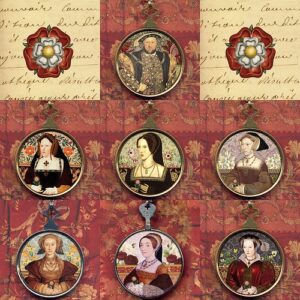 Back in early 2011, I wrote a series of posts on the “six wives’ stereotypes”, the various stereotypes, labels, myths and downright lies which surround Henry VIII’s six wives. Fiction, films, TV series and even history books have led to people having very warped ideas of these women and to some feeling that they have to pick sides/teams, to put one wife on a pedestal while shooting down another. I may spend my time writing about Anne Boleyn and her family, but all six wives (and Henry himself) fascinate me and they don’t deserve to be pigeon-holed and misrepresented.
Back in early 2011, I wrote a series of posts on the “six wives’ stereotypes”, the various stereotypes, labels, myths and downright lies which surround Henry VIII’s six wives. Fiction, films, TV series and even history books have led to people having very warped ideas of these women and to some feeling that they have to pick sides/teams, to put one wife on a pedestal while shooting down another. I may spend my time writing about Anne Boleyn and her family, but all six wives (and Henry himself) fascinate me and they don’t deserve to be pigeon-holed and misrepresented.
For those of you who missed the series of post in 2011, here they are and I do hope you enjoy my thoughts. Do feel free to comment on them and share your views.
- Catherine of Aragon – The Boring One?
- Anne Boleyn – The Mysterious and Maligned One
- Jane Seymour – The Meek and Mild One?
- Anne of Cleves – Flanders Mare?
- Catherine Howard – The Material Girl?
- Catherine Parr – The Old Nursemaid